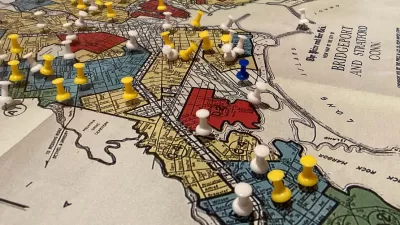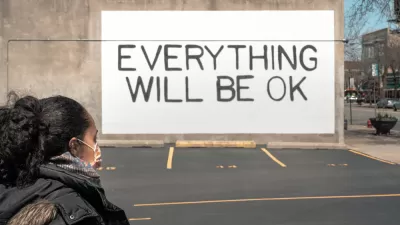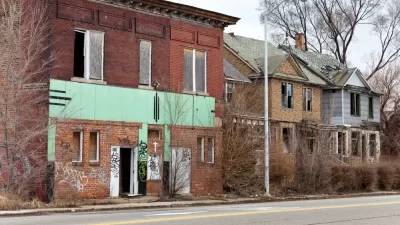Voucher recipients live in slightly better neighborhoods than the average poor household, but they still live in economically and racially segregated neighborhoods with poor-performing schools.

The Housing Choice voucher program was created to give low-income households the opportunity to move out of public housing—where the effects of the cycle of poverty are severe—and into federally subsidized rental units. The program's success depends on both the willingness of landlords in better neighborhoods to offer voucher-subsidized units and for voucher recipients to relocate to better neighborhoods.
However, concentrated poverty and segregation persist. As Elizabeth Kneebone and Natalie Holmes write, voucher recipients' "housing choices remain limited to racially segregated low-income neighborhoods that may not be much different than where they started...Delivering on the potential of the voucher program to improve access to opportunity means grappling with the barriers to mobility that restrict its use."
Kneebone and Holmes compare the conditions of voucher holders with poor families living in rental housing and public housing. They find that across the country, voucher holders live in less concentrated poverty than public housing residents and low-income renters, but they still live in majority-minority neighborhoods where the average poverty rate is between 19 and 29 percent. They cite a Macarthur Foundation study, which finds that voucher holders live near lower-performing schools than poor families overall, but higher-performing schools than public housing residents.
FULL STORY: Promise and pitfalls of housing choice vouchers vary across the nation

Alabama: Trump Terminates Settlements for Black Communities Harmed By Raw Sewage
Trump deemed the landmark civil rights agreement “illegal DEI and environmental justice policy.”

Study: Maui’s Plan to Convert Vacation Rentals to Long-Term Housing Could Cause Nearly $1 Billion Economic Loss
The plan would reduce visitor accommodation by 25% resulting in 1,900 jobs lost.

Planetizen Federal Action Tracker
A weekly monitor of how Trump’s orders and actions are impacting planners and planning in America.

Waymo Gets Permission to Map SF’s Market Street
If allowed to operate on the traffic-restricted street, Waymo’s autonomous taxis would have a leg up over ride-hailing competitors — and counter the city’s efforts to grow bike and pedestrian on the thoroughfare.

Parklet Symposium Highlights the Success of Shared Spaces
Parklets got a boost during the Covid-19 pandemic, when the concept was translated to outdoor dining programs that offered restaurants a lifeline during the shutdown.

Federal Homelessness Agency Places Entire Staff on Leave
The U.S. Interagency Council on Homelessness is the only federal agency dedicated to preventing and ending homelessness.
Urban Design for Planners 1: Software Tools
This six-course series explores essential urban design concepts using open source software and equips planners with the tools they need to participate fully in the urban design process.
Planning for Universal Design
Learn the tools for implementing Universal Design in planning regulations.
Caltrans
Smith Gee Studio
Institute for Housing and Urban Development Studies (IHS)
City of Grandview
Harvard GSD Executive Education
Toledo-Lucas County Plan Commissions
Salt Lake City
NYU Wagner Graduate School of Public Service





























